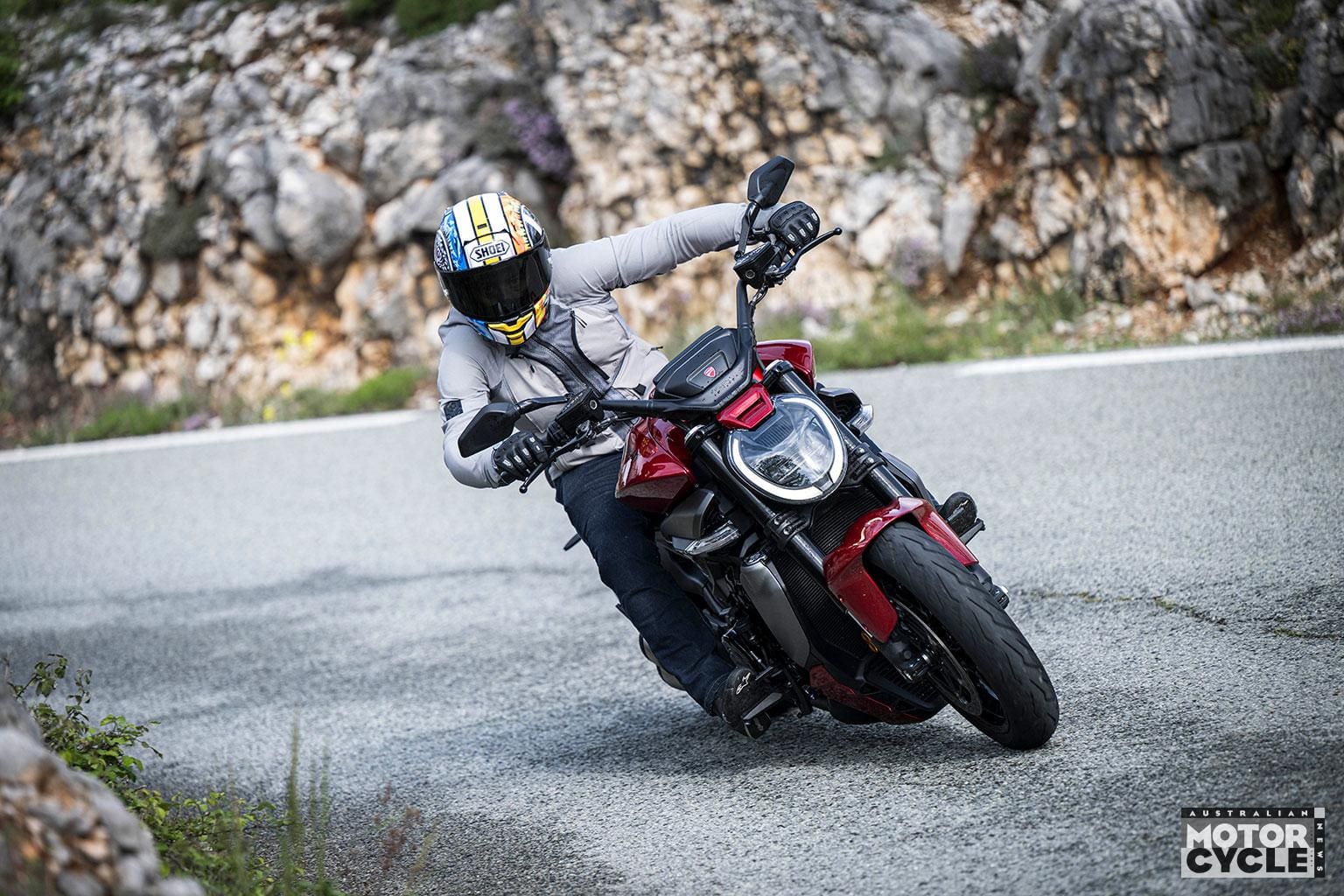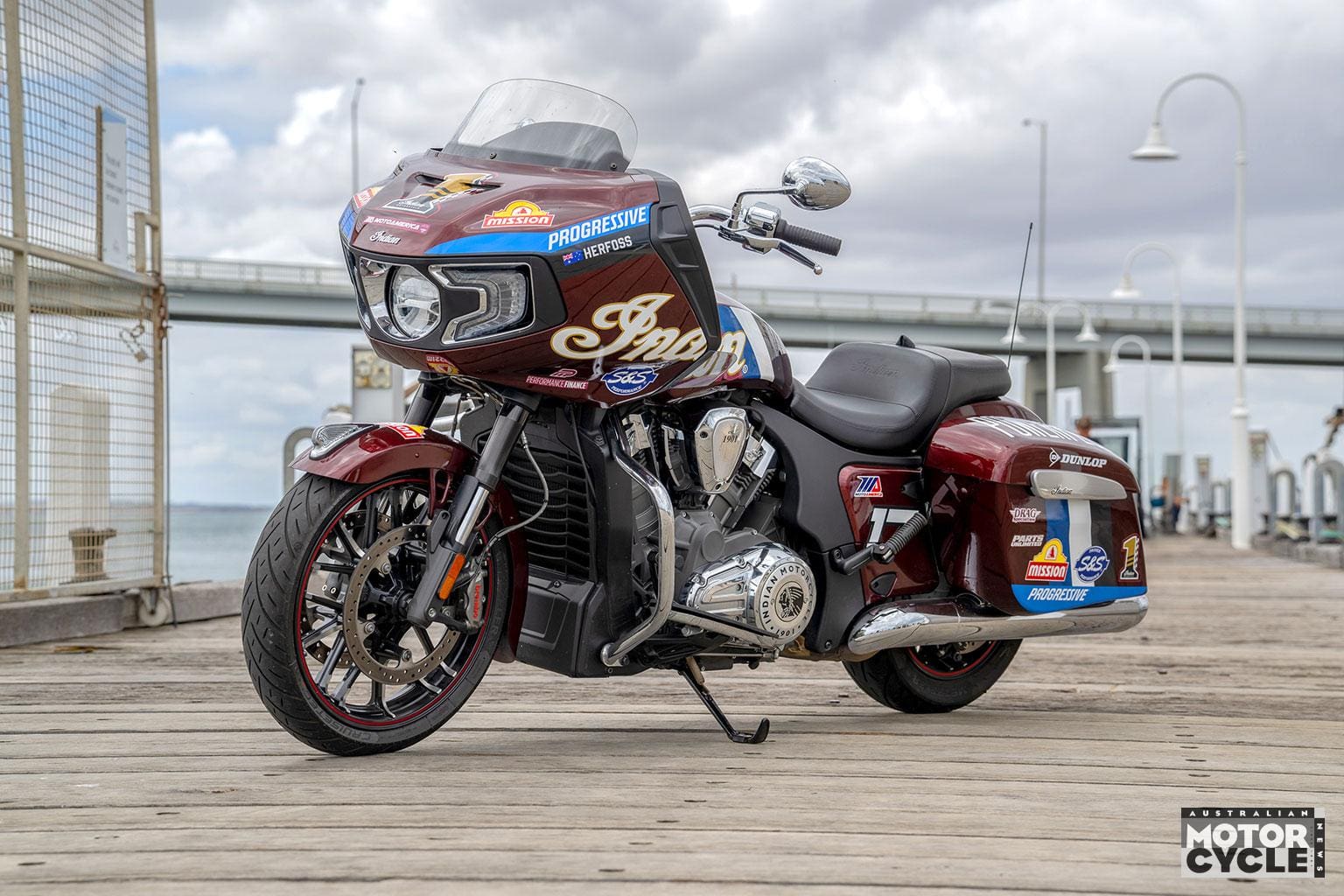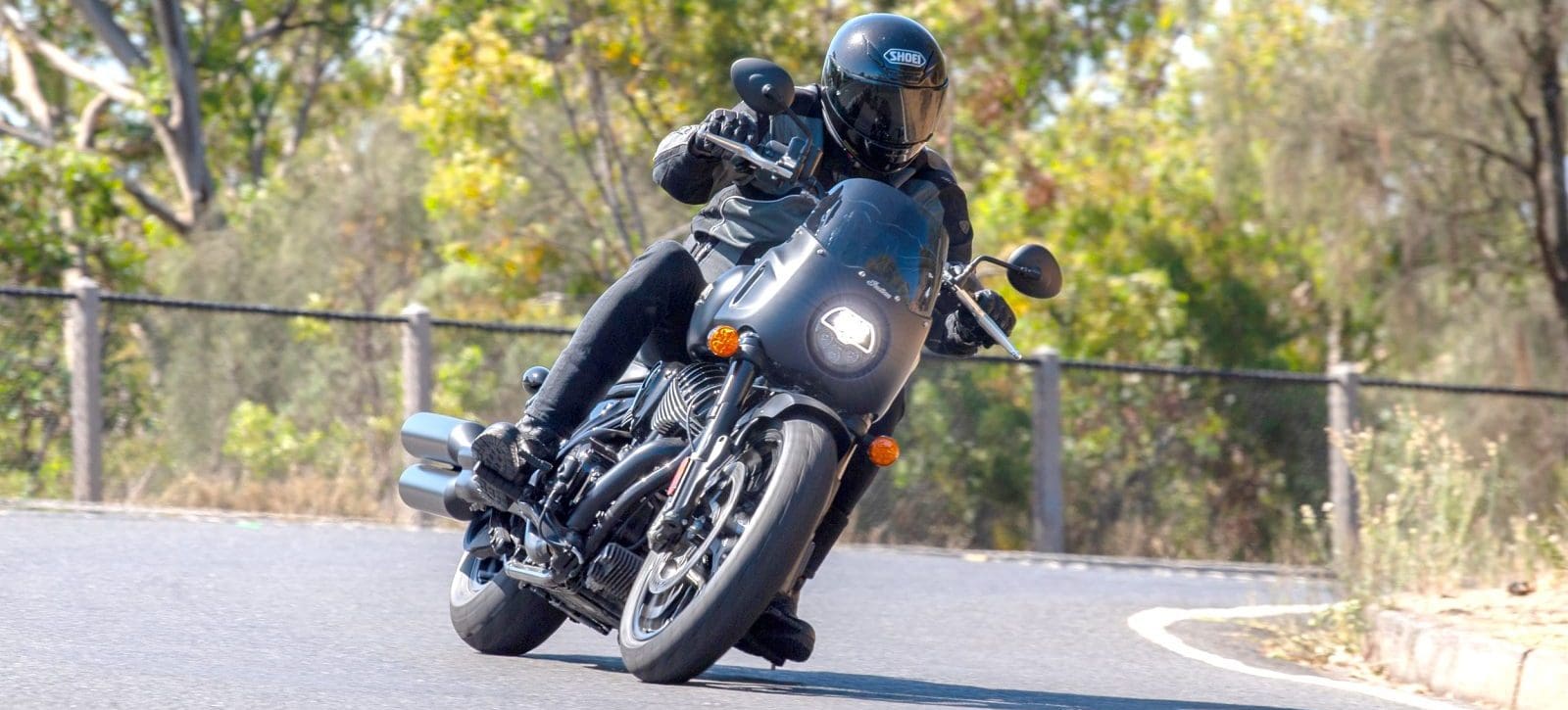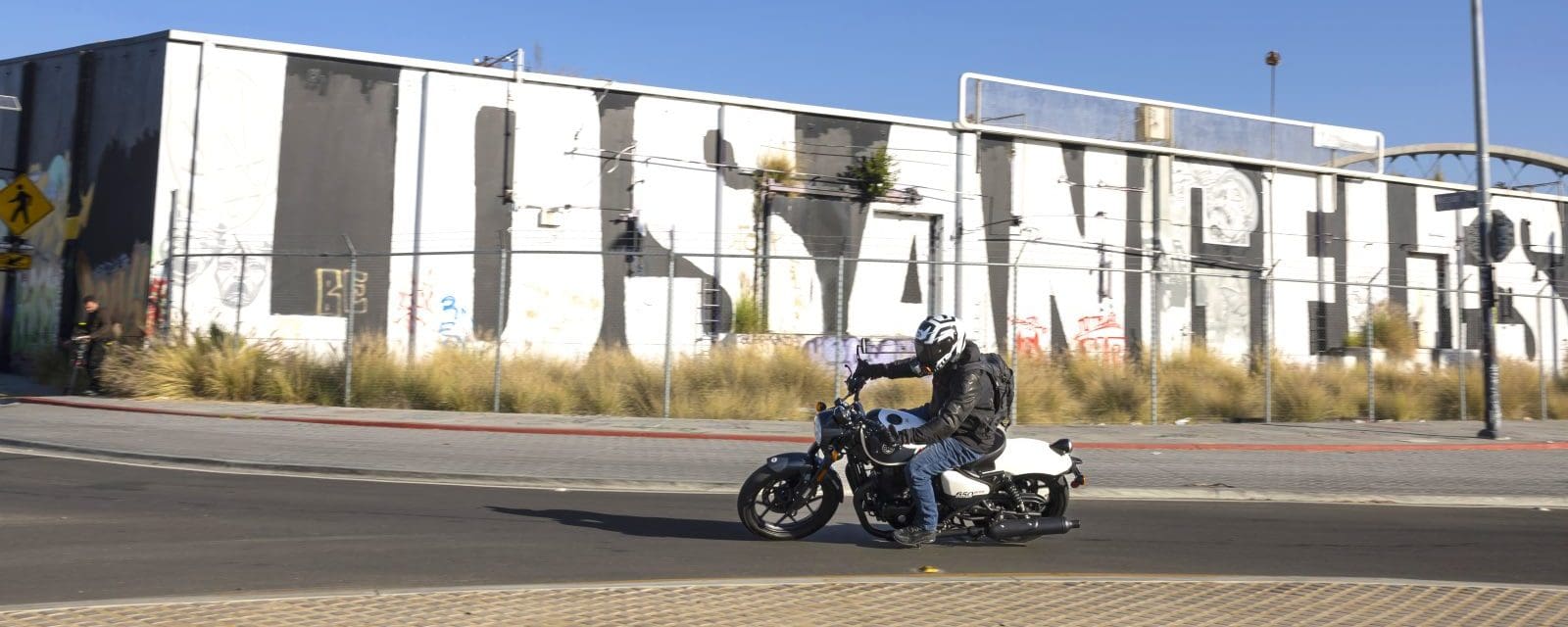When it comes to motorcycles, I just can’t leave things be. I feel compelled to tinker and modify and customise. I built a custom bagger a few years back, but I’ve always loved the idea of building up an American cruiser with USD forks and big modern brakes. The combination of old-school looks and new technology has always blown my hair back. Procrastination and lack of cash have conspired to never bring this to fruition in my garage and if you wanted something like this, you would have to pay serious bucks for some boutique custom. Then, in 2019, Indian released its flat-tracker styled FTR 1200 which cleaned up in our 2019 Motorcycle of the Year, and now it has gone and belted one last nail in my custom-cruiser coffin by releasing the Challenger, with its new 1768cc water-cooled engine, USD forks, Brembo radial-mounted brakes and a sophisticated electronics package.
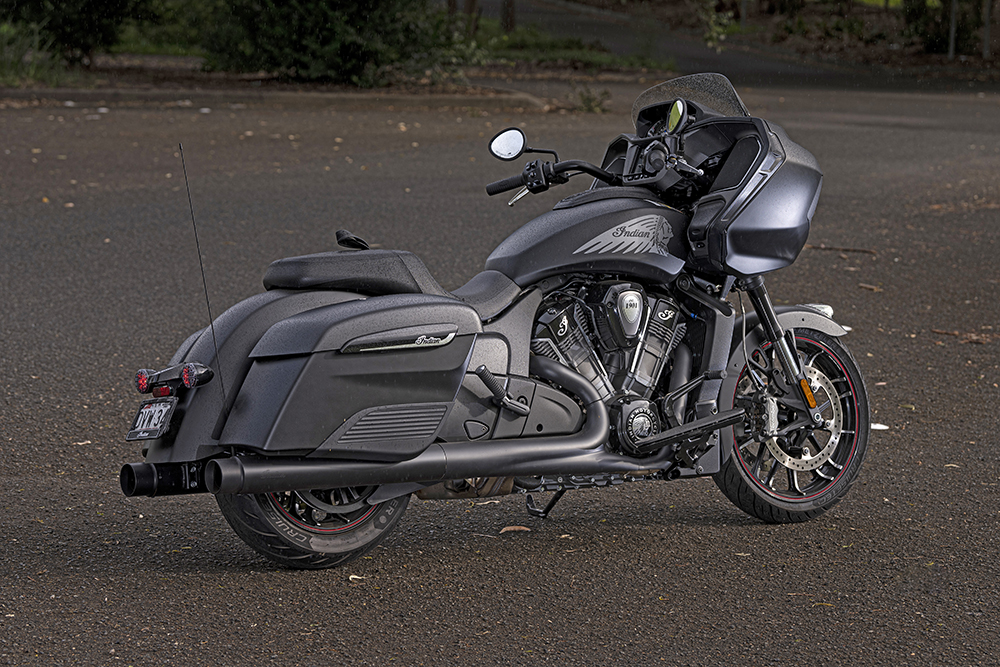
There’s two models; the dark and mysterious Dark Horse and the blinged up, chrome encrusted Limited. The Challenger is a shot across the bow of Harley’s fixed fairing Road Glide and, on paper, the Indian pips the Harley, boasting a specs sheet that bests its fellow American all the way from its rider-aid package through to its power output.
At the heart of the Challenger is the new PowerPlus liquid-cooled engine. The 60-degree V-twin runs a single overhead cam with four valves per cylinder, and is the most powerful engine fitted to a production-model Indian so far. Traditional owners in the American cruiser market have had an aversion to water-cooled bikes; maybe it’s the dirty big radiator and assortment of black rubber hoses that are needed to cool down a whopping big V-twin. But Indian has created an exceptionally neat-looking cooling package, and most of the ugly stuff is neatly tucked away where it’s can’t be seen or cause a scene.
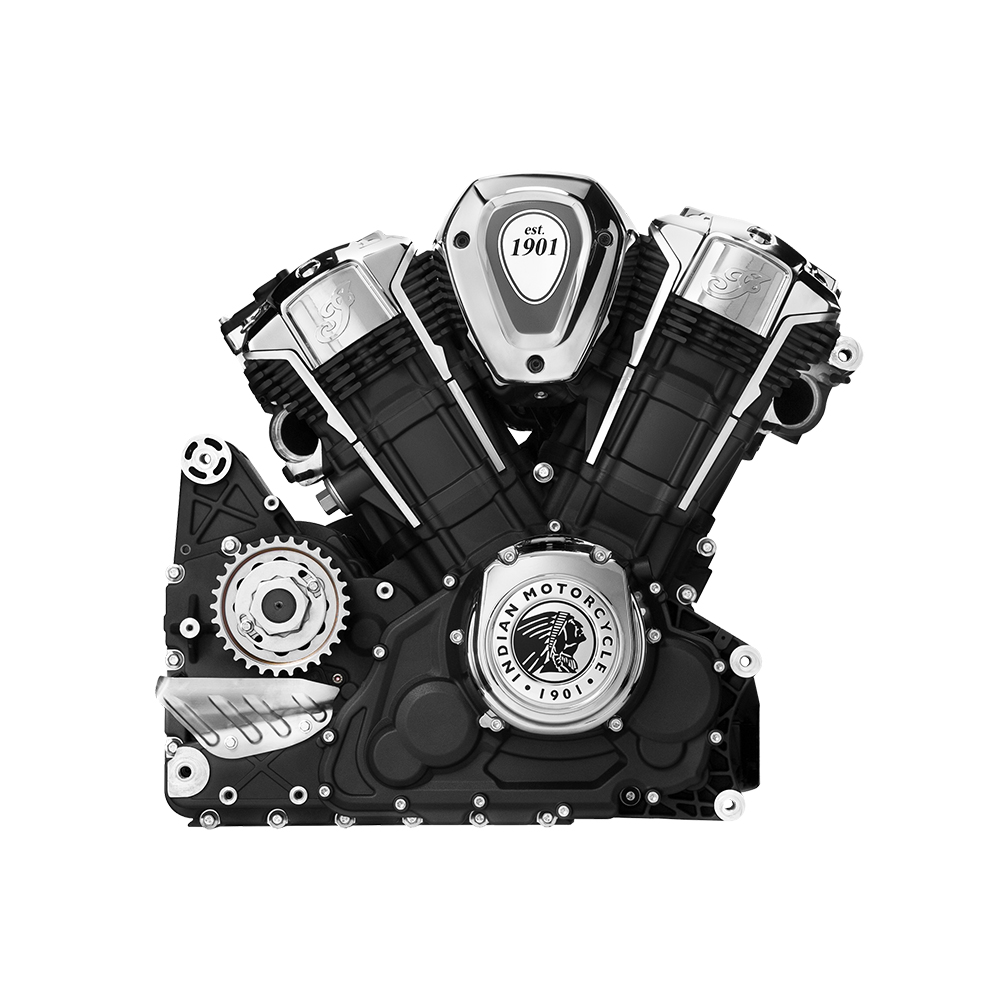
Water-cooling increases efficiency and helps the Challenger return impressive power and torque figures. There is a tyre-frying and class-leading 187Nm of torque at 3800rpm as well as a claimed 91kW (122 horsepower in the old coin) on tap.
Do a walk around and you notice more cool things than any standard traditional-style cruiser has a right to have. The front-end, for example, is equipped with components that you might expect to find on a sportsbike; the KYB USD fork and Brembo’s radial-mounted calipers. You’ll also find contrast-cut mag wheels, LED lighting all the way around and colour-coded bags capable of carting over 68 litres of your portable shrapnel.
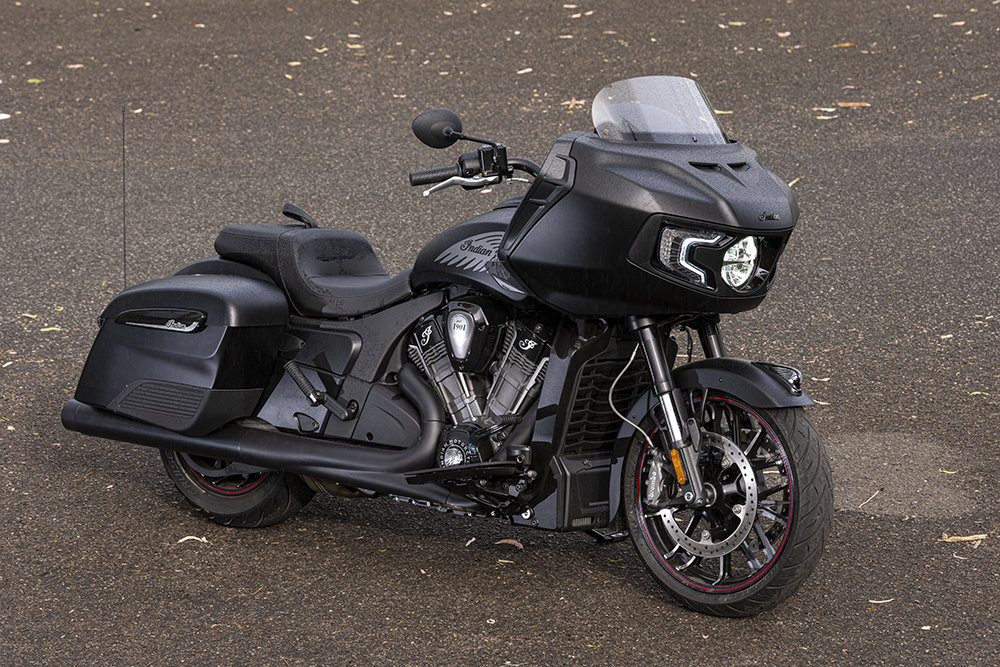
Despite the Challenger’s 361kg dry weight, it certainly doesn’t feel as awkward as other American baggers to physically push around. Indian has spent time getting the pork that the Challenger is carrying nice and low, and it’s paid off – at rest or play, it just doesn’t feel as heavy as it is.
Parking your arse on the wide and low (628mm) seat has you staring off at the large fixed fairing, complete with electronically adjustable windscreen, 7-inch touchscreen command centre and two analogue-style gauges that sit above, displaying speed, revs and an array of idiot lights. Having the speedo nice and high tells you that someone that actually rides a motorcycle put some thought into the design of this bike; not having to drop your eyes to your crotch to check on your rate of knots is beaut.
The Dark Horse is a keyless affair. Thumb the start button and the infotainment system wakes up slowly; much like the FTR1200, it takes way too long to load. But it doesn’t stop you from riding off, so really, it’s one of those first-world problems.
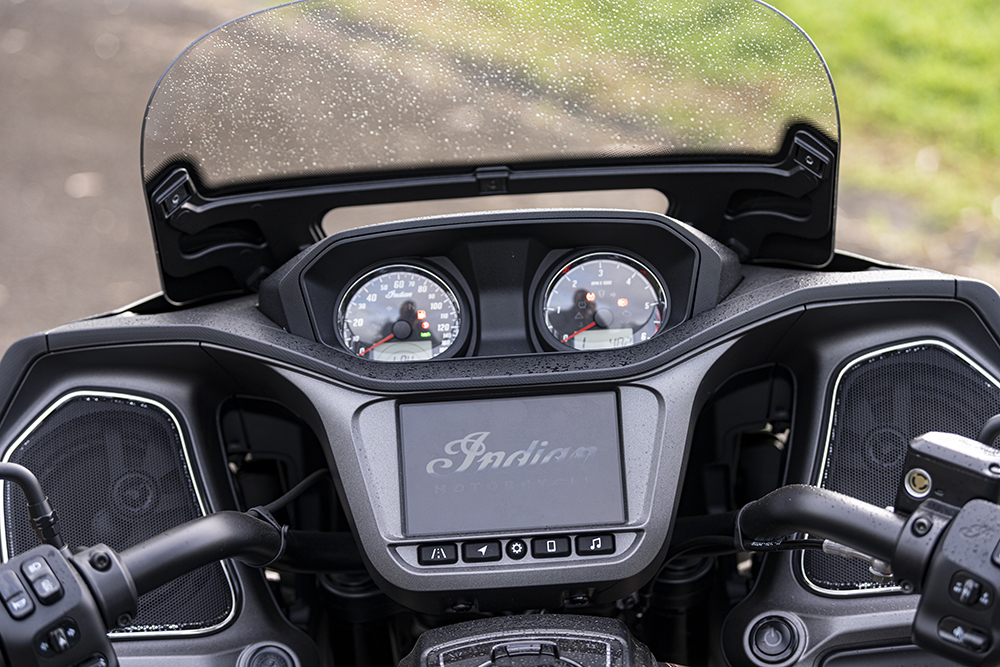
The touchscreen works perfectly even with gloves, and features a truck load of features including navigation, radio, tyre-pressure monitors and can connect to your smart device either via Bluetooth or via a USB cable hidden away in one of two neat storage compartments that reside the fairing. On the tech front, there are three ride modes on offer, cruise control, plus Bosch-controlled cornering ABS and traction control as standard. But with all this fancy fruit that the Challenger is packing, it would have been nice to see heated grips as standard.
Once you’re rolling you notice that despite the chunky torque figures, you need to work the clutch and six-speed box more than you do on, say, Harley’s 164Nm Ultra Limited that we tested recently (AMCN Vol 69 No 20). There is certainly no lack of grunt, it’s just geared tall; in fact dumping the clutch out of slow corners will light up the rear Metzeler until the cornering-enabled traction control puts an end to the shenanigans. The clutch lever action isn’t one of the Challenger’s high points, either. It’s a big vague, the friction point feels like its somewhere around the front guard and there’s no adjustment at the ’bar.
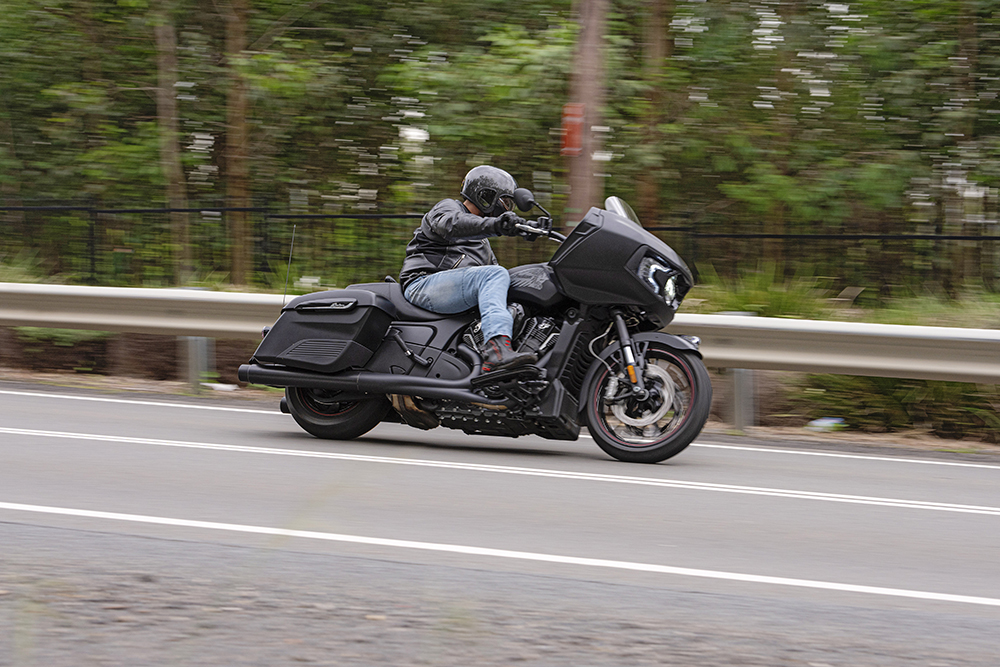
The engine feels smooth for a V-twin approaching 1800cc; there’s not a whole heap of vibrations at any revs and it’s got a feel that’s somewhere between a Japanese cruiser and a Harley. As big V-twin cruisers go, the Power Plus engine loves to rev, and despite its weight and surface area, it’s bloody fast. I reckon it’s the quickest dressed cruiser I’ve ridden out-of-the-crate. It’s just the extra 1500rpm or so of added enthusiasm that makes a difference and you can find yourself surprised by your velocity when you peek at the speedo. And how fast you’re travelling is deceptive, the combination of its stability and the protection afforded by the fairing and screen clouds your sense of speed.
Nigh-on 400 kilos of metal and flesh careening along at great speed will always benefit from a decent way of slowing itself down and the saucy looking Brembos up front are up to the task. The twin-disc set-up offers enough power to haul it up and enough feel to know what the big girl is up to, and to be honest, you wouldn’t expect much less from Brembo radials these days and it’s nice to see them fitted to a big bagger. Out the back there’s a Nissin twin-pot unit hidden away behind the bags, its effective and like on all big beasts, it’s invaluable in slow-speed antics.

For a bike of its size and weight, it’s a bit of fun on a twisty road. It’s no sportsbike, but it’ll happily play corners and offers a surprising amount of ground clearance. Take note other American cruiser manufacturers; you can still have a bagger that doesn’t grind itself into a wedge shape and not compromise on its looks or its handling.
The 43mm KYB USD front fork is non-adjustable, and the FOX rear monoshock offers remote pre-load adjustment. After my first gander at the sportsbike-like front end, I was a little disappointed at the Challenger’s lack of adjustability, but I was just being a wanker. I wouldn’t have adjusted the suspension even had that been an option; it soaked up anything I could throw at it, delivering a smooth and plush ride without wallowing around like a stricken hippo. You might wind on a bit of pre-load on the back if you’re hauling a pillion and kit, but otherwise it’ll be fine for 90 percent of riders at legal speeds.
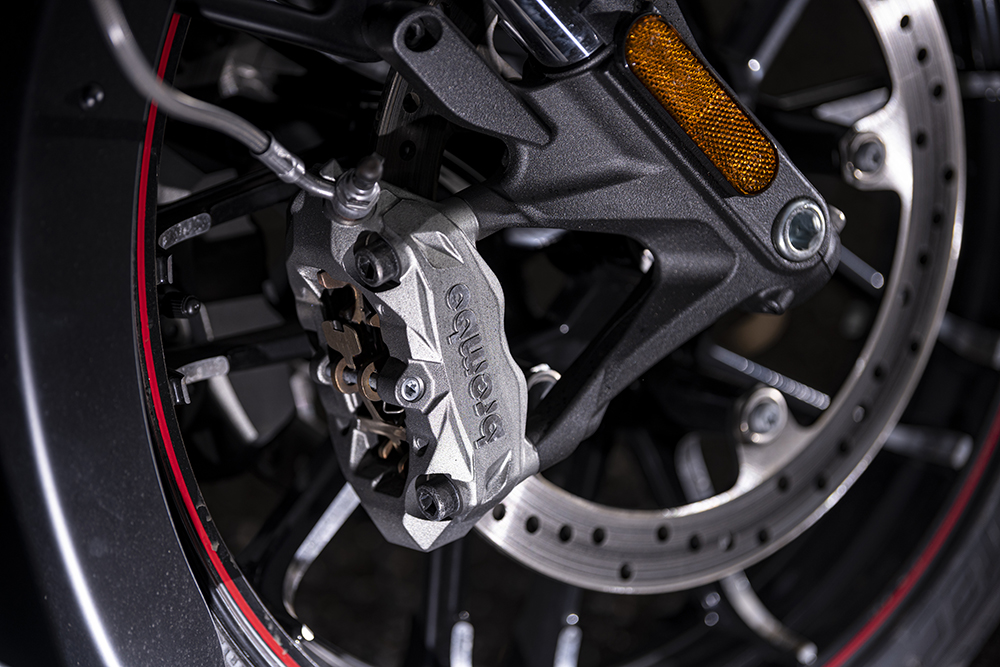
Sure, it’s fast and it handles and stops well, but you want a bagger to be able to take you places or what’s the point. Why bother with all that weight and size if it ain’t packing creature comforts? Never fear trendsetters, there’s all manner of bells and whistles, and a seat and riding position that’ll get you down a very long road in relative comfort.
The fairing offers excellent protection, and the adjustable screen – controlled by a handy switch on the right handlebar – blew a stream of air over my head instead of at it in its fully elevated position. There’s over three inches of screen adjustability, so unless you exceed six foot by a sizeable margin, it has you covered. Cruise control is standard and is controlled via switches also located on the right-hand switch block – when will manufacturers learn? And it’s difficult to use while maintaining constant throttle.
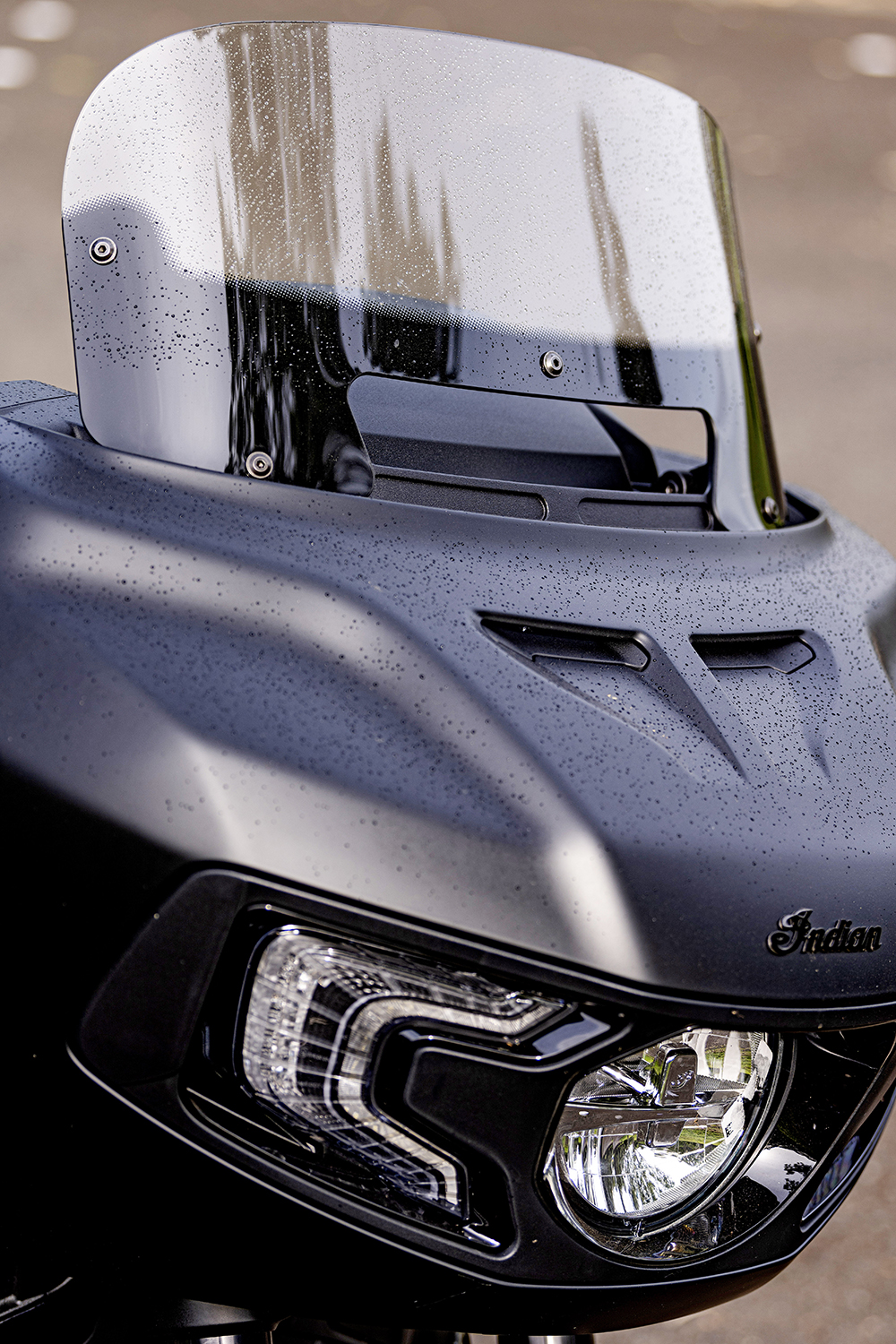
The Dark Horse boasts a 100-watt built-in stereo system. You can listen to tunes on your phone or tune into the wireless. The volume has two settings, one that increase the volume as your speed increases and the other setting keeps it constant whether stopped or rolling. The auto-level function isn’t fantastic. With the volume adjusted so that you can hear the system at standstill it’s ramped up to obscene levels when you get rolling. Alternatively, if it’s set to a decent foot-tapping level while you’re rolling, you can’t hear it at standstill.
The Challenger morphs the looks and stance of an American bagger with the spec level and abilities of a metric cruiser, or even tourer. Without riding them back to back, I’ll say that I’d choose the Challenger over its H-D rival for performance, and over its European and Japanese rivals for street-cred and coolness.

It has lifted the bar for fixed-fairing baggers and if Harley responds we could see more new and cool models in the future. There’s nothing better than competition to drive innovation and just because something looks old school, the Challenger proves it also doesn’t need to ride old school.
TEST: PETE VORST PHOTOGRAPHY INCITE IMAGES

